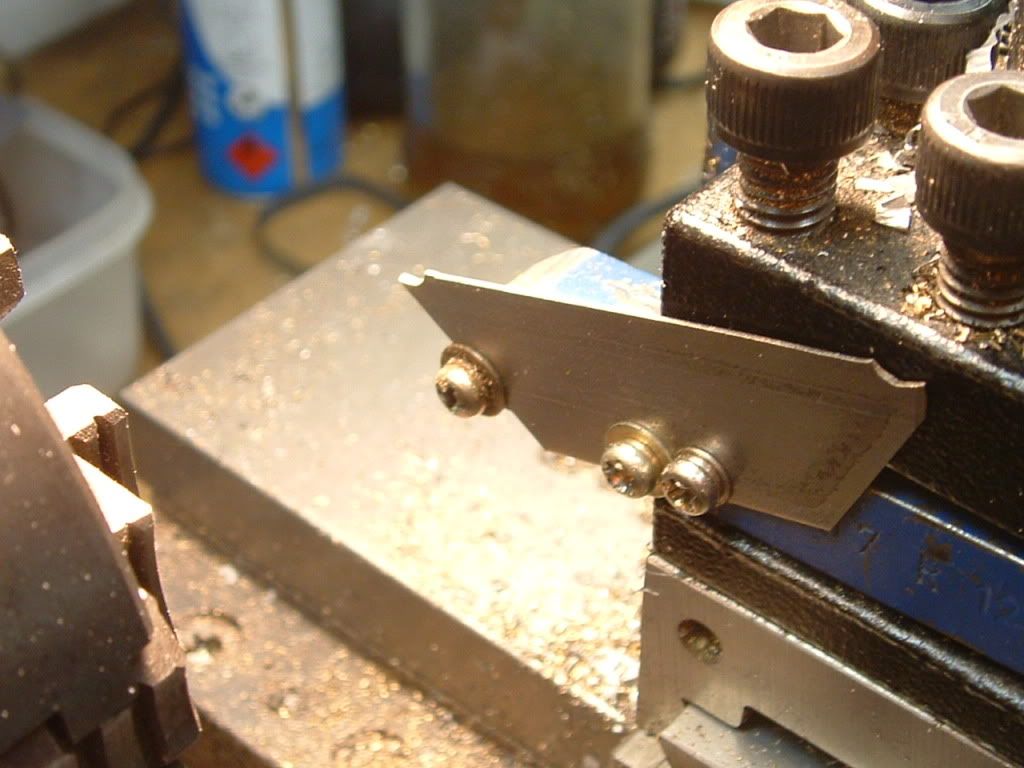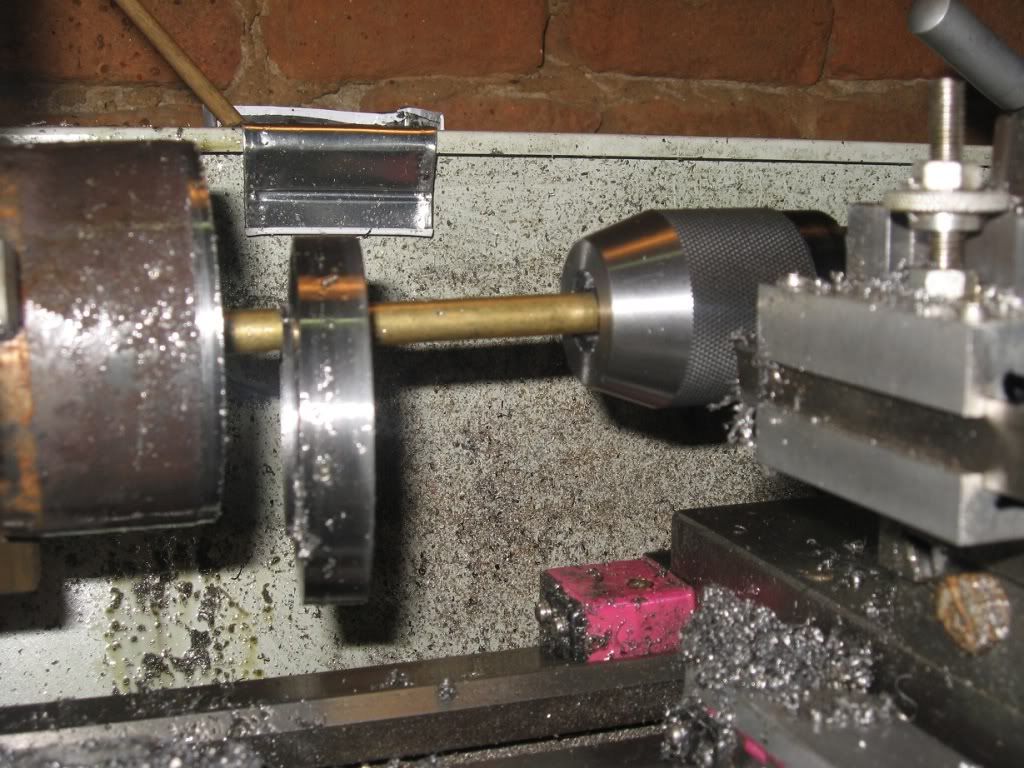Russel
Well-Known Member
- Joined
- Oct 19, 2009
- Messages
- 108
- Reaction score
- 0
I find with my Sherline lathe that everything must be perfectly straight. For example, I use a machinist square to align the tool post. The work must be mounted solidly. Use plenty of lubricant. But, I also noticed that speed and feed are kind of finicky. At first I had a hard time cutting off anything larger than .75", but as I aquired a better feel for it, I find that 1.25" aluminum isn't too hard if you are carefull. I keep the speed down to about 200 rpm and the feed rate by "feel" I begin the cut and adjust the feed to where it is smoothest. I know that doesn't tell you much, after a while it becomes obvious as you cut. I know that if I feed into the work too slowly, it will chatter, and if I feed to quickly, it will "bite" forcing the part out of alignment in the chuck and lock up the machine. Like most things I have tried, it takes practice.

Edit to add another photo:


Edit to add another photo:










